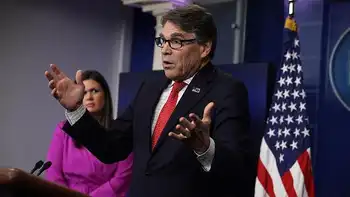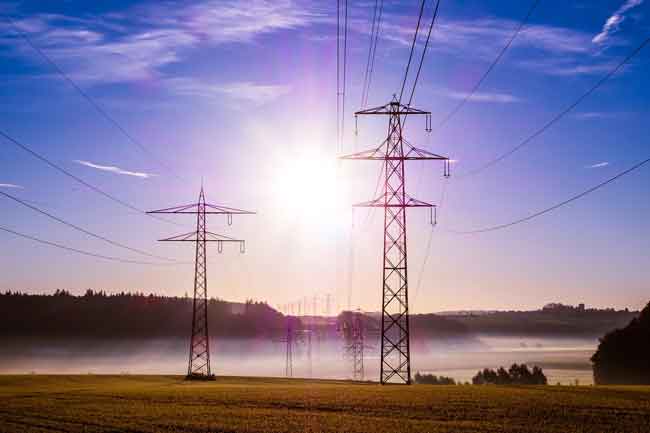Niagara power project celebrates 50 years
By Buffalo News
NFPA 70b Training - Electrical Maintenance
Our customized live online or in‑person group training can be delivered to your staff at your location.

- Live Online
- 12 hours Instructor-led
- Group Training Available
The words quoted above are ones used by reporter Bob Balme on Feb. 10, 1961, to tell readers of The Buffalo Evening News, as this newspaper then was called, about what Gov. Nelson A. Rockefeller said was a "great and exciting moment in the history of the state."
The moment of euphoria was reported in a banner headline across the top of Page One of The News: "Niagara Ceremony Opens New Era" and "Giant Project Goes to Work as Governor Throws the Switch." It was supplemented by at least eight other articles and several pictures.
The governor closed a symbolic red-handled switch at 11:35 that morning to "formally put into service the largest water-driven power complex in the free world," The News reported.
Calling it a "great day," the report went on to say that "The power from the Niagara Gorge at Lewiston went into a high-voltage transmission line and onto the system of Niagara Mohawk Power Corp. Almost instantly, it was consumed in homes, farms and industries of the region."
Since that day half a century ago, the Niagara Power Project has been generating electricity not only for the region, but at times for almost all of New York State — and even for neighboring states.
Several things have changed:
* The project's two main facilities now are called the Robert Moses Niagara Power Plant and the Lewiston Pump-Generating Plant. Moses, one of the leading urban planners of the 20th century and often called the state's "master builder," was chairman of the State Power Authority, now the New York Power Authority, and head of the state parks system when the project was built. He died in 1981 at age 92.
* The original turbines have been replaced.
* Niagara Mohawk has become National Grid.
* The project has been granted a new federal license to keep it running for another 50 years.
* The debate over whether Niagara power should be allocated almost exclusively to upstate New York has waxed and waned through the years.
The story of power generation near Niagara Falls began long before the State Power Authority was created. Early industrialists dreamed of diverting some of the water from the upper Niagara River into canals around the falls, where the falling water could be used to turn waterwheels that would power their industries. The spent water then could be channeled into the Niagara Gorge.
The much lamented and only partly completed Love Canal was a remnant of that era. The Love Canal excavation later was used as an industrial dump that leaked toxic chemicals into the surrounding neighborhood, becoming one of the nation's worst environmental disasters.
The New York Power Authority begins its official chronology on June 10, 1920, when President Woodrow Wilson signed the Federal Water Power Act, authorizing the federal government to license and regulate hydropower projects.
But the real impetus for the Niagara Power Project came June 7, 1956, in a devastating rock slide when the gorge wall collapsed onto Niagara Mohawk's 60-year-old Schoellkopf Power Station, destroying the huge generating complex that had been called the world's greatest hydroelectric plant and wiping out the city's largest taxpayer.
Within months, President Dwight D. Eisenhower signed the Niagara Redevelopment Act, directing the Federal Power Commission to issue a license to the State Power Authority to build a hydroelectric project near Niagara Falls.
Construction began in 1957, and in about three years, on exactly the date that Moses had predicted, the Niagara Power Project was officially "turned on."
Thousands of workers and some of their families inundated Niagara County with their presence during the construction.
When the project produced its first power in 1961, it was the largest hydropower facility in the Western world, according to a report by the Power Authority.
"Today, Niagara is the biggest producer of electricity in New York State, generating 2.4 million kilowatts — enough power to light 24 million 100-watt bulbs at once!" according to the report.
In 2006, the Power Authority completed a $300 million upgrade of the Moses power plant in which all 13 turbines were replaced and improvements were made to generating equipment in the power dam.
Up to 375,000 gallons of water is diverted from the upper Niagara River every second. The diverted water flows through two gigantic conduits under the City of Niagara Falls and to Lewiston, where it flows through the Moses plant, spinning the turbines that power the generators that turn mechanical energy into electrical energy.
At night, when the demand for electricity is low, the 12 pump-turbines at the Lewiston Pump-Generating Plant operate as pumps transporting water from the forebay up to the huge reservoir that occupies part of what was the neighboring Tuscarora Indian Reservation. During the daytime, when the use of electricity peaks, the Lewiston pumps are reversed and become generators as the water pours out of the reservoir and through the Moses plant to produce still more electricity.
Thus, the same water is used twice to generate power before it is discharged into the lower Niagara River below the falls.
The $720 million project actually produced its first power on a somewhat trial basis Jan. 28, 1961. The formal dedication and symbolic "throwing of the switch" came about two weeks later on the campus of Niagara University, next to the water-filled forebay that connects the two plants that make up the project.
The tape-recorded voice of President John F. Kennedy told officials at the dedication ceremony, "This great power project signifies a new and more prosperous era for the Niagara Frontier and is an example to the world of North American efficiency and determination."
His predecessor, Eisenhower, said, "The mighty power of the Niagara has been harnessed for the public good, and the beauty of historic Niagara Falls has been preserved for all times."
Former President Herbert Hoover said, "It was fortunate that Gov. Thomas E. Dewey appointed [Moses] to direct the American part of this huge enterprise of partnership with Canadian Ontario Hydro. The gigantic benefits to our nation are today a reality."
Former President Harry S. Truman said, "I want to congratulate ... the people of the Niagara Frontier for this great project which will add to the general well-being of the community."
The federal license requires the Power Authority to supply municipal electric systems, rural cooperatives and even some adjoining states with low-cost electricity produced at Niagara. Power-hungry downstate areas have been trying for decades with mixed luck to siphon off some of Niagara's electricity for their own use.
In 2005, then-Gov. George E. Pataki signed sweeping economic-development legislation to continue making industries in Western New York eligible for low-cost "replacement power" from Niagara and to create a block of "preservation power" from the St. Lawrence-Franklin D. Roosevelt Project near Massena that will remain in Northern New York even if it is relinquished by the project's current industrial customers.











